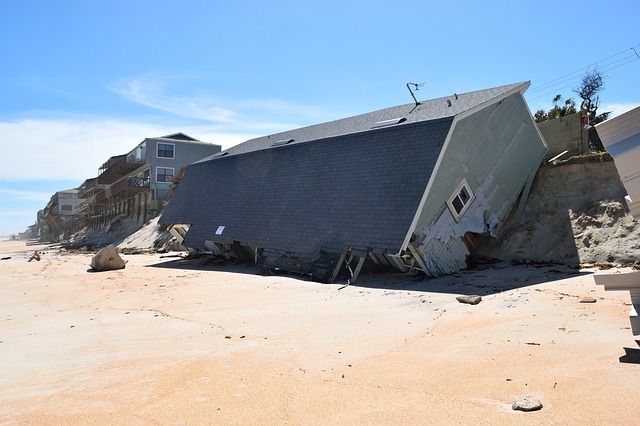Climate change has led to the increased frequency and severity of extreme weather events. For investors in real estate, physical property damage resulting from severe weather is a significant threat. Those that manage or invest in real estate portfolios are especially at risk. For many years, the danger of flood and fire damage has been offset by insurance programs and federal assistance supporting rebuilding after disaster. This could change very soon; accounting for climate change risk in advance could prevent catastrophic losses to your investments.

There are two general categories of climate risk: physical risk and transition risk:
- Physical Risk: Physical property damage caused by climate change. Damage is either acute or chronic. Acute risks are caused by extreme weather events like fires, floods and hurricanes. Chronic risks are the result of long-term global climate patterns such as extreme heat, drought, and high sea levels.
- Transition Risk (Regulatory Risk): Disruption to an asset or sector due to policy, technology and market changes in response to climate change and efforts to decrease greenhouse emissions.
Building resilience into your portfolio can help you avoid direct investments that could be physically damaged as well as transition risks caused by government policy and changes to the market. While it is hard to completely separate your portfolio from climate risk, investors should look to take the smart approach by limiting their exposure to vulnerable markets and implementing mitigation options for physical investments.
Climate Risks to Real Estate Markets
The economic burden of properties that are subject to climate risks will increase from insurance premiums, operational costs for real estate, capital expenditure for mitigation measures, and property taxes on protective infrastructure. As sea levels rise and storms become more frequent, many communities will need to be adapted or abandoned. When this transition happens, investors could be stuck with properties that have little or no value.
Flight from real estate areas at severe risk of damage could cause massive shocks to the housing market. Homes are often sold with little or no warning that they are at high risk to climate damage. Although some cities are buying and demolishing buildings in heavily flooded areas, this tactic is expensive and difficult.
As the world moves to a low-carbon economy, it will cause significant transition risk to investors. Many asset managers have already signed on to initiatives like the Net Zero Managers Initiative which support the goal of lowering greenhouse gas emissions. Groups such as this are already making decisions incorporating efforts to lower emissions into their investment strategy. Transition risk could vary significantly from nation to nation and across local jurisdictions, depending on how they have taken action to lower greenhouse gases and divest from carbon-intensive economic sectors.
Government Action
With the Biden Administration, the federal government is taking action to require consideration of climate and disclosure of climate risks. FEMA is updating the National Flood Insurance Program so that home insurance premiums better reflect the risk of flood with a program called Risk Rating 2.0. This change is projected to raise the cost of flood insurance by 80% to discourage investment in risky homes.
Treasury Secretary Janet Yellen announced a coordinated climate policy strategy and a treasury “climate hub”. The Securities and Exchange Commission has also started the process for implementing rules that would require firms to evaluate and disclose the risk of climate change to their assets.
In addition, some state governments have rules to force the disclosure of climate risk from flood and fire. In California, the seller or seller’s agent are required to disclose when properties are located in a flood hazard area.
Government changes to climate change awareness policies for investments are likely going to continue to change. Incorporating physical and transition risks into your investments as soon as possible is the best way to insulate yourself from the effects of these changes.